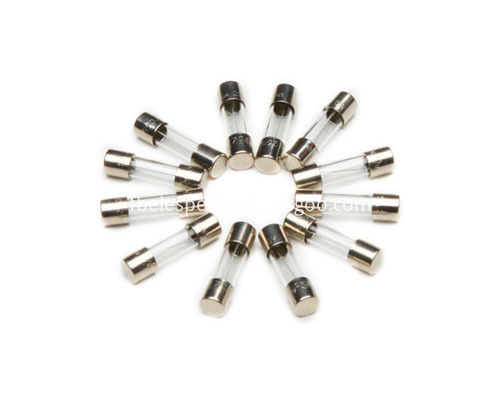UL (Underwriters Laboratories Inc.) is an American organization engaged in product safety certification and standard safety development, and has a great influence in North America and the world. Headquartered in the United States, it has a 110-year history of product evaluation and standards preparation. It has more than 18,000 products tested each year, and has more than 19 billion UL marks on its products, and more than 60 subsidiaries around the world. According to EliPuszkar, general manager of the lighting planning business department of UL, UL is embarking on a series of safety assessment standards involving LEDs . In the technological innovation of lighting, the application of LED is undoubtedly the most exciting, it will change the structure of the entire lighting market, and its wide application is just around the corner. When it comes to LEDs, the technology itself is not a very new thing. Many years ago, LEDs were used as indicators for instruments and equipment. With the development of technology, the performance and improvement of chips and materials have been greatly improved, which has greatly improved the brightness and life of LEDs, thus promoting the wider use of LEDs. Nowadays, many manufacturers have launched their own LED lighting products. With the large-scale use of LED lighting products, we will see LEDs will be the mainstream of lighting applications in the near future. Long life and virtually maintenance of these two deeply attracted a large number of lighting designers, coupled with its low power consumption, strong adaptability and controllability of color and brightness and good, the LED lamps Become the new darling of lighting products. In order to ensure that the new LED lighting products can be accepted and trusted by the public like ordinary lighting fixtures, UL has begun to develop LED safety assessment standards. When developing a new product, manufacturers should consider the following factors that affect safety: Electric shock: In order to prevent electric shock, it is generally treated separately for two cases: 1 LED products powered by Class 2 power supply; 2 LED lamps directly connected to the power grid or powered by non-Class 2 power supply. For appliances that use Class 2 power supply, there is no danger of electric shock due to the voltage and current limitations of the power supply. For products that use other power supplies, the insulation performance and the accessibility of the charged body need to be evaluated. And meet the requirements of the standard. However, when using the Class2 power supply, it is necessary to consider a special use situation - humid environment, if the product is used in a humid environment, its open circuit voltage should not exceed 15V AC (30V DC). Fire: In order to avoid fire, many aspects of the product should be tested and evaluated, such as LED spacing, construction and materials of the diffuser, the type of housing and the installation location and working methods. Although we used a Class 2 power supply to limit the energy of the product to avoid or reduce the fire when designing the product, according to UL's past experience, it is still possible to reach temperatures above 90 °C (US National Building Code) It shall be installed on the surface of ordinary flammable materials and the temperature of the equipment shall not exceed 90 °C). Therefore, this aspect should be taken into consideration when designing LED luminaire products, and temperature testing is required (the surface temperature of each component in the luminaire should be within its own rated temperature range). Physiological hazards: The light emitted by LEDs may be harmful to vision or other physiological parts such as skin. This has been a concern, but so far, there has been no definitive study to show that the use of LEDs does not cause significant physiological hazards. For any type of light source, the use of diffusing sheets to reduce the light intensity can effectively reduce radiation damage to the human body. UL's LED initiatives: Probably by the end of January this year, UL will officially release a new standard UL8750 - evaluation draft of LEDs for lamps. Based on this, UL will evaluate the LED safety aspects of lamps using LEDs as light sources. UL emphasizes that UL8750 is a standard that is juxtaposed with other standards (which does not belong to which specific luminaire standard). In evaluating products, in addition to using this standard to evaluate the safety of LEDs, the entire luminaire product still uses existing luminaire standards. For the basis of assessment. For example: fixed luminaires, if the LED is used as the light source, UL8750 is used to evaluate the LED light source itself. In addition, UL1598 is used to evaluate the safety performance of the whole luminaire. Similarly, for portable luminaires that use LEDs as a light source, UL8750 and UL153 are also used for product safety evaluation. Standard Technical Expert Group (STP): In the first quarter of 2007, UL will form a standard technical team consisting of producers, test and certification bodies, building inspectors, government officials, consumers, commercial/industrial users, etc. (known as STP-StandardTechnicalPanel). Based on the above draft, the team will draft and publish a suitable LED National Standard (ANSI Standard) to evaluate LED lighting products sold in North America.
Fuse, also known as current fuse, is defined by the IEC127 standard as "fuse-link."It mainly ACTS as overload protection.When the fuse is properly placed in the circuit, the fuse will fuse itself and cut off the current when the current rises to a certain height and heat, thus protecting the safe operation of the circuit.
Auto Plug-In Fuses,East Europe Auto Fuses,Fuse Blocks,Ceramic Fuse Ningbo Best Group Co.,Ltd , http://www.speakerbuzzer.com